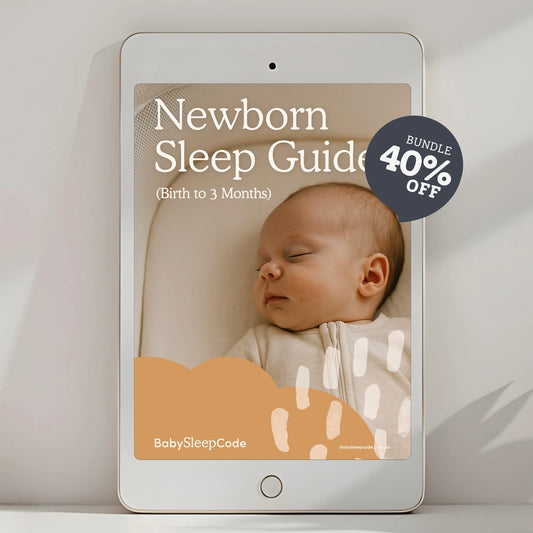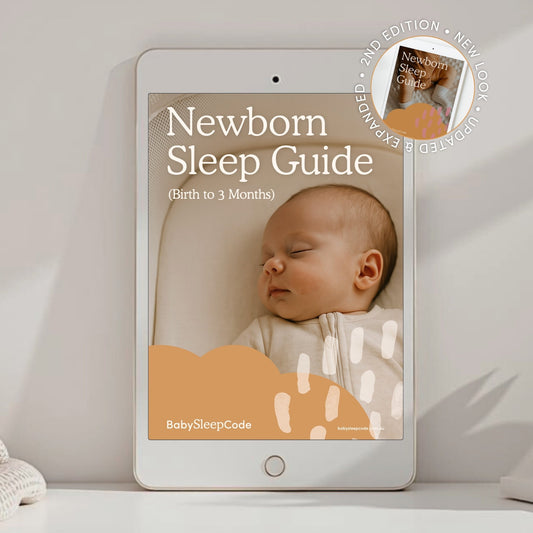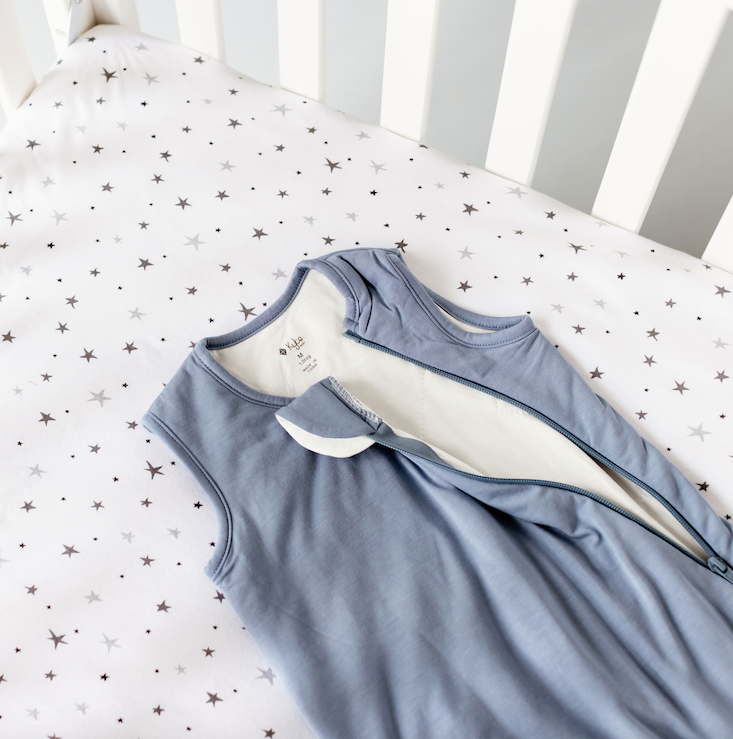For a baby to sleep soundly, they need to feel snug and comfortable, not too hot and not too cold. Here are some tips on how to safely and appropriately dress your baby for sleep.
No loose blankets, pillows, or head coverings
Babies control their temperature predominantly through their head and face, which is one of the reasons why it’s important to always lay your baby on their back for safe sleeping. You also want to keep any loose blankets, pillows, underlays out of the cot, and make sure their head is always uncovered (no beanies, hats, bows).
The ideal room temperature
Studies show that both infants and adults sleep better in a cooler room, but dressed snugly. But I know that’s not achievable for everyone, and I’ve found babies can sleep just as well in a room as low as 16°C/61°F and up to 24°C /75°F, as long as they are dressed appropriately for that temperature.
In some extreme climates though, it will be important to be able to maintain a more consistent and safe temperature through the night. It's important to never let your baby overheat as it's associated with an increased risk of SIDS.
If using an air conditioner or fan, it’s best not to have this pointing directly at them. And keep in mind air conditioners can dry out the air, so it can be good to also place a humidifier in the room.
Use a sleeping bag / sleep sack
Sleeping bags are a safe alternative to using blankets to keep a baby warm. Plus unlike blankets, a sleeping bag will keep your baby the same temperature all night as they’re unable to accidentally kick these off.
When used consistently they can also become a great sleep association, and can be a helpful way to help your baby understand it's time for sleep.
For newborn babies you can use a swaddle, but as soon as they show signs of rolling it's important to stop swaddling their arms in and transition them to a baby sleeping bag.
Avoid synthetic fabrics
Always check the labels of any sleepwear you’re going to use and make sure that they are made from 100% (or close to) natural fibres - like cotton, bamboo, wool. And avoid any synthetic/man made fibres - as these don’t breath well, and can often make a baby feel clammy, sweaty and uncomfortable even in the coldest temperatures.
Opt for a TOG rated sleeping bag and adjust under layers
I highly recommend investing in sleepwear with a Thermal Overall Grade (TOG rating) so you can more easily determine how many layers they’ll need depending on the room temperature. Most TOG rated brands come with their own dressing guide, but try to keep in mind that 20 degrees in winter feels very different to 20 degrees in summer, and I do find that most brands caution on the lower side.
If you’re room sharing, in can be easier to look at what you feel comfortable sleeping in and add another layer to what they’re wearing.
Ie.
If it’s a hot night and you’re most comfortable with just a sheet on, then dress them in a lightweight sleeping bag .2 or .5 TOG and a thin short sleeve onesie OR just a thin long sleeve onesie with no sleeping bag.
If it’s a cold night and you’re sleeping in pj’s and a thick duvet, then they’ll likely need a 3.5 TOG sleeping bag with a long sleeve onesie and a singlet. Or a 2.5 TOG sleeping bag with two long sleeve onesies underneath and a singlet.
Keep in mind adult mattresses are designed to hold more heat than a cot mattress will as well, as cot mattresses are firm, thin and typically lower to the ground than what yours will be.
Dress them for the coldest part of the night
It might seem tedious, but it's a good idea to check what the temperature is going to fall to every night! Especially in those early morning hours, and either dress them for the coldest part of the night or set the heating to come on when the temp is dropping.
If you’re still offering a feed in the night, you can swap to a warmer sleeping bag after that feed so you don’t have to adjust the room temperature half way through the night.
Keep hands uncovered (most of the time)
if your baby is still swaddled, and it's a really cold night you can keep their hands covered to help keep them a little cosier.
And when you’re first transitioning from a swaddle to an arms out sleeping bag it can be helpful to dress them with a long sleeve onesie with built in mittens so you can keep their hands covered for the first few days.
But as they get more used to sleeping with their arms out of the swaddle it’s actually best to go ahead and keep their hands uncovered, even on cooler nights.
Allowing access to their hands can help them find their own ways of soothing, and winding down before sleep. Don’t worry if their hands feel cold, babies have poorer circulation than adults so it’s common for their hands and feet to feel colder than the rest of their body.
Figuring out whether they are too hot or too cold
Signs that your baby might be too hot are:
- Red flushed face or cheeks
- Sweating
- Hot to touch
- Sleeping on their back with arms stretched out wide
- Waking often with little short cries, but settling quickly after repositioning
Signs that your baby might be too cold are:
- Cool to touch (face, neck, back)
- Sleeping on their tummy with arms tucked underneath them
- Waking often in the cot, but settling quickly in arms or a parents bed
- Sleeping well but then waking often 3am to 5:30am (and it’s a cooler night)
Every home will feel different at different temperatures
While these tips have hopefully been helpful, it’s important for you to make your own informed decision on what and how many layers to sleep your baby in to keep them safe and comfortable while sleeping.
Struggling with night wakes? Check out our baby sleep guides, or sleep consult packages to help get your sleep on track.
“After 3 nights on her new routine she had her first 12hr stretch of sleep & hasn’t turned back!” 7.5 months. Taylor, Colorado Springs, USA
“Oliver has been sleeping through the night and settling himself to sleep, tonight he pointed to the cot as if he was ready for bed!” 12 months. Emma, Adelaide, Australia
“Our baby now sleeps through the entire night! We almost couldn’t believe it after being so traumatized about sleep for so long.” 6 months. Chelsey & Cabriel, Seattle, USA






